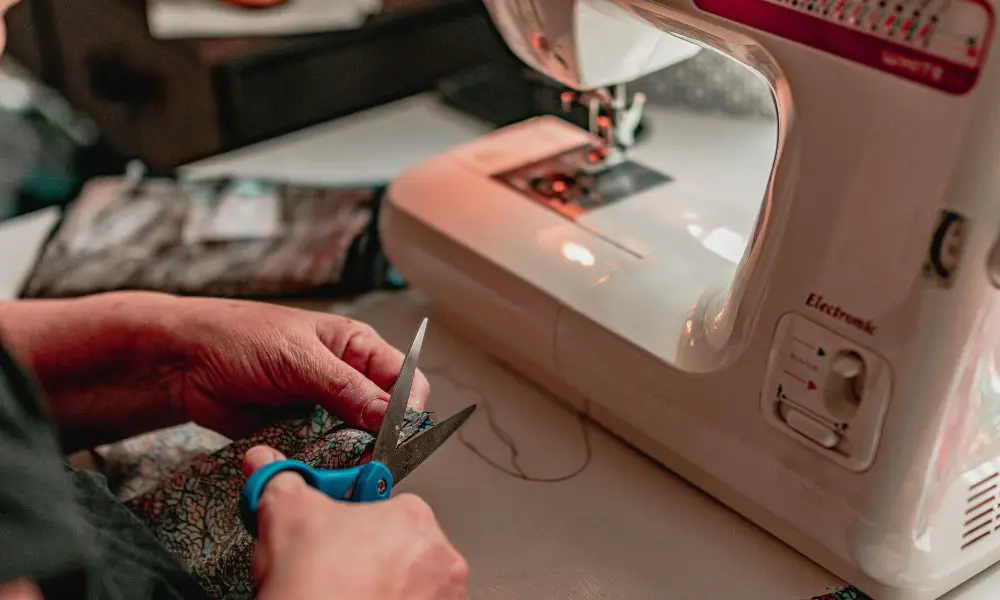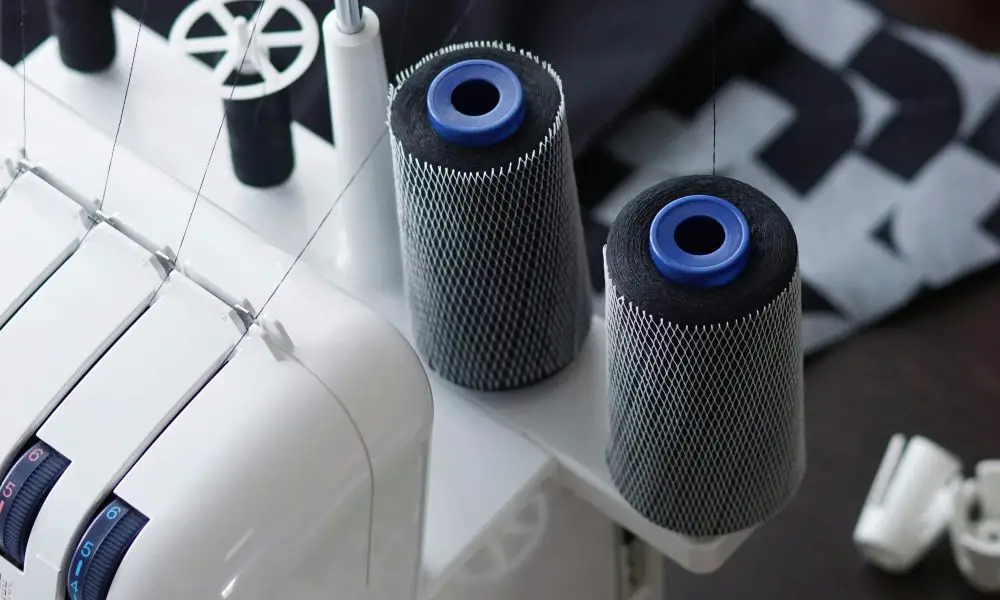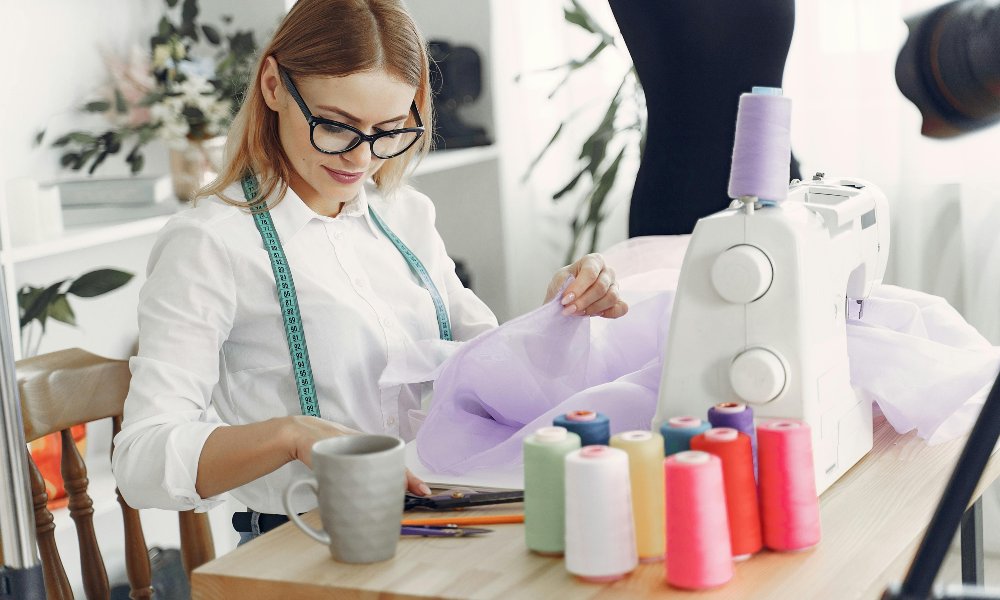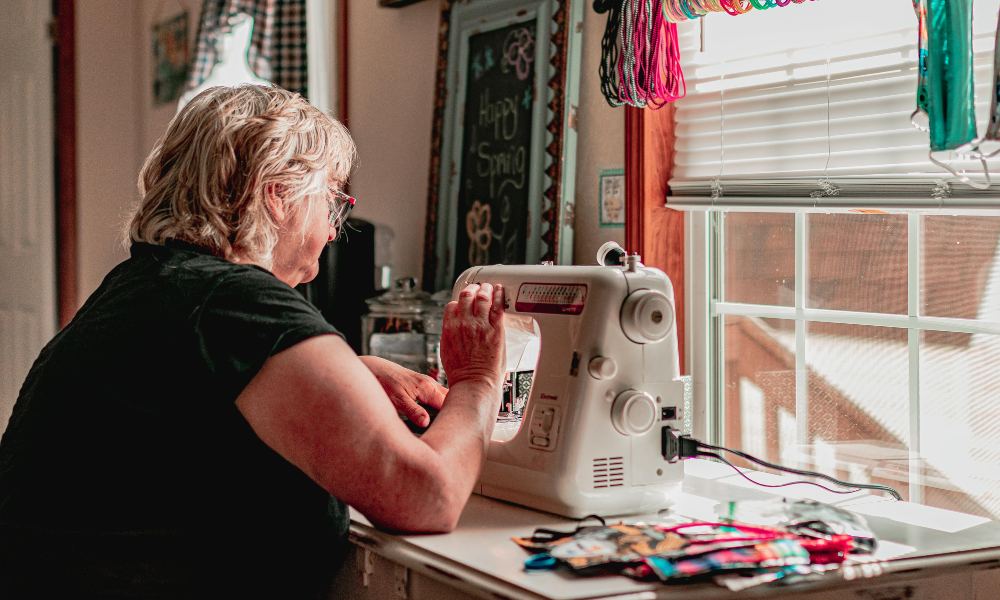Have you ever started sewing only to find your bottom thread isn’t catching correctly? It can be so frustrating! One minute, you’re happily sewing along, and nothing seems to be working right the next. Don’t worry; a sewing machine not catching the bottom thread is a common issue that can be fixed with a few troubleshooting steps. Discover the potential reasons and remedies to bring your project back on course quickly by reading further.
What Causes the Bottom Thread to Not Catch?
Before you can fix the problem, it helps to understand what might be causing your bottom thread to misbehave in the first place. Here are some of the most common culprits behind a sewing machine not catching the bottom thread correctly:
Improperly Threaded Machine
It may sound obvious, but one of the biggest reasons your bottom thread isn’t catching is because your sewing machine isn’t threaded properly. It’s easy to focus on guiding the top thread correctly through the take-up lever, tension discs, and needle. But you also need to ensure the bottom thread is feeding through the bobbin case and up into the needle plate correctly. Missing one of the threading points in the bobbin area means the bottom thread won’t loop around the top thread to form a stitch. Carefully following your machine’s threading diagram is critical.
Tension Issues
The balance of tension between the top and bottom threads is vital for forming even, locked stitches. If the maximum thread tension is too tight, it will prevent the bottom thread from looping up to meet it. On the other hand, if the lower thread tension is too loose, the bottom thread won’t hold the top thread in place to catch it. Checking both top and bottom tensions and adjusting them to reach the right balance for your fabric can help the threads work harmoniously together.
Bobbin Problems
Using the wrong style of bobbin for your particular machine model can definitely cause issues with catching the bottom thread. Plastic and metal bobbins are not interchangeable, and the right type must be used. Bobbins also need to be wound smoothly and evenly without gaps or overlaps in the thread, which can prevent them from rotating correctly. It’s also a good idea to check the bobbin case itself for cleanliness and free of lint, which could obstruct smooth bobbin movement.
Lower Looper Trouble
On sewing machines with loopers, timing issues between the upper looper and lower looper can prevent the bottom thread from interlocking correctly with the top thread. If the lower looper hook timing is off, the loop of the bottom thread won’t form in sync with the needle and full thread. Lint buildup in the lower looper area can also cause this. Another potential culprit is lower looper damage – if the piece is bent or worn, it may not be rotating to form the stitch as it should.
How to Fix a Sewing Machine Not Catching Bottom Thread

Now that we’ve uncovered some likely reasons behind your sewing machine issue, here are helpful steps to get your bottom thread catching correctly again:
Double Check Machine Threading
It never hurts to thoroughly re-check the threading process from start to finish. Use your manual for the proper order, and make sure you are guiding the top thread correctly through every notch, take-up lever, and thread guide. Follow the bottom threading pathway through the bobbin case carefully as well. Seeing exactly where the thread should go can reveal any missed steps.
Adjust Tensions
If you’ve confirmed the machine is threaded correctly, adjusting your thread tensions can get the threads working together. Test the top thread tension by holding the thread near the spool and tugging – if it is very difficult to pull, the tension is too tight. Loosen the top tension slightly and re-test. For the bottom thread, the bobbin case tension screw can be tightened incrementally if the thread is too loose. Find the right combination of top and bottom tension for smooth feeding.
Inspect the Bobbin Area
Check your bobbin itself as well as the bobbin case and surrounding area. Make sure you are using the correct bobbin type and size for your machine make and model. The bobbin should also be evenly wound with no knots or tangles, which could cause uneven rotation. Remove the bobbin case and use compressed air or a small brush to remove any lint that has built up before reinserting the bobbin. Lint and debris can interfere with smooth operation.
Look at the Lower Looper
If your machine has loopers, inspecting this area is wise. Look for damage like small dents or bending, which could indicate why the bottom thread isn’t looping properly. You can also test and adjust the looper timing following your manual instructions. Remove any lint or debris around the lower looper with tweezers so there are no obstructions. If damage is preventing the looper from working correctly, replacement may be needed.
Preventing Future Bottom Thread Issues
Once you’ve solved your current sewing machine issues, there are helpful ways to prevent frustration with bottom thread catching in the future:
- Clean lint and threads from your machine’s inner mechanisms and bobbin area regularly. Built-up debris can cause all sorts of unpredictable operations over time.
- Inspect and replace any damaged or incorrect bobbins. Using the manufacturer-recommended part avoids problems.
- Check the recommended tension settings for your fabric type and weight. Adjusting tensions prevents the threads from fighting against each other.
- Brush up on threading and bobbin insertion by reviewing your manual periodically. Even experienced sewers can miss a step!
FAQs:
Why does my sewing machine skip stitches?
Stitches skipping is also a common symptom of bottom thread not catching properly. Check threading, tensions, bobbin, and lower looper as recommended in the article.
How do I know if my sewing machine tensions are balanced?
Test by tugging the threads – the top thread should pull easily, but the bottom thread should be fairly taut. Adjust individual tensions gradually until balanced.
How often should I clean lint out of my sewing machine?
Lint and thread debris should be cleaned from inner mechanisms and bobbin case area regularly, at minimum every 5-10 hours of sewing time.
Can I wind my own bobbins on my sewing machine?
Most home sewing machines allow you to wind your own bobbins cleanly and evenly for proper thread delivery. Refer to manual.
Why does re-threading the machine help?
Going through the full threading process helps locate any missed steps causing issues like the bottom thread not catching.
The Takeaway
Dealing with a sewing machine that won’t catch the bottom thread can try your patience, but don’t despair! In most cases, this frustrating problem is fixable with a few troubleshooting techniques. By taking the time to check for common issues like incorrect threading, tension problems, bobbin damage, and lower looper troubleshooting, you can get your project back up and running smoothly. With a few preventative maintenance steps as well, you can avoid bottom thread headaches on your next creation.
Have you solved your sewing machine bottom thread-catching issues? Let us know in the comments!
***
Main image: pexels.com




